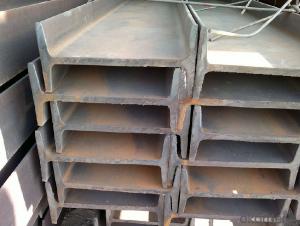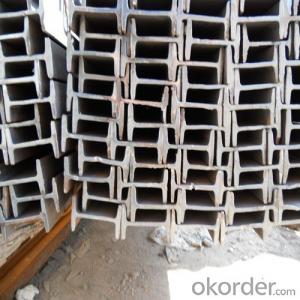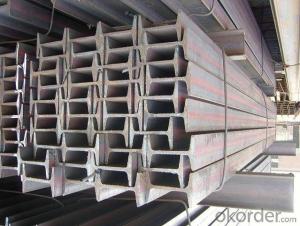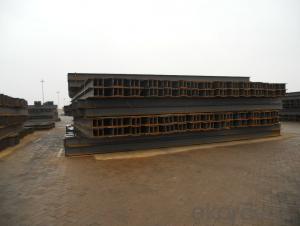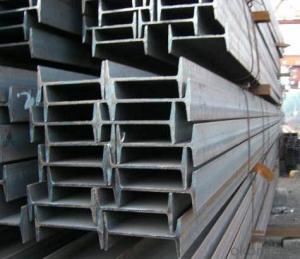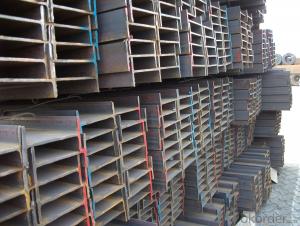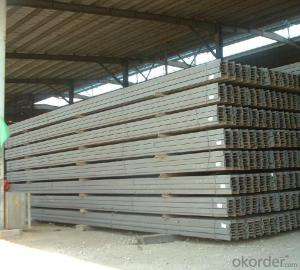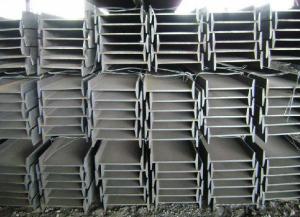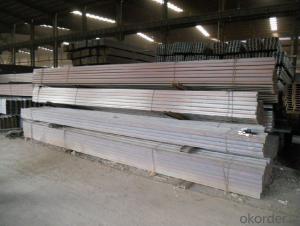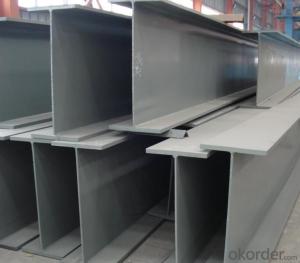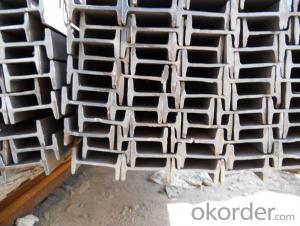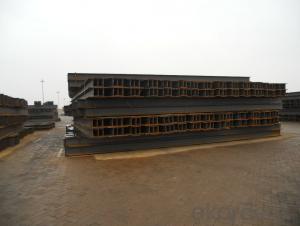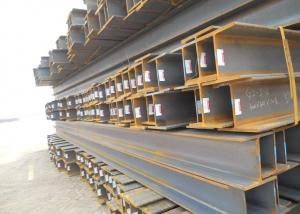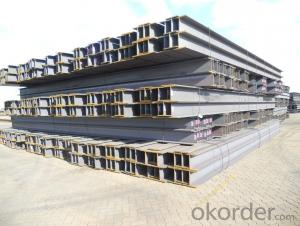European Standard IPE200 Steel High Quality
- Loading Port:
- China main port
- Payment Terms:
- TT OR LC
- Min Order Qty:
- 50 m.t.
- Supply Capability:
- 10000 m.t./month
OKorder Service Pledge
OKorder Financial Service
You Might Also Like
Specification
European Standard IPE200 with High Quality
Product Description:
Specifications
1.Standard: EN10025
2.Material: S235JR or Equivalent
3.Length: 6m, 12m
4.Size:
Size (mm) | Mass (kg/m) |
200*100*5.6 | 22.4 |
Usage & Applications
Commercial building structure;
Pre-engineered buildings;
Machinery support structures;
Prefabricated structure;
Medium scale bridges.
Packaging & Delivery
1. Transportation: the goods are delivered by truck from mill to loading port, the maximum quantity can be loaded is around 40MTs by each truck. If the order quantity cannot reach the full truck loaded, the transportation cost per ton will be little higher than full load.
2. With bundles and load in 20 feet/40 feet container, or by bulk cargo, also we could do as customer's request.
3. Marks:
Color mark: There will be color marking on both end of the bundle for the cargo delivered by bulk vessel. That makes it easily to distinguish at the destination port.
Tag mark: There will be tag mark tied up on the bundles. The information usually including supplier logo and name, product name, made in China, shipping marks and other information request by the customer.
If loading by container the marking is not needed, but we will prepare it as customer's request.
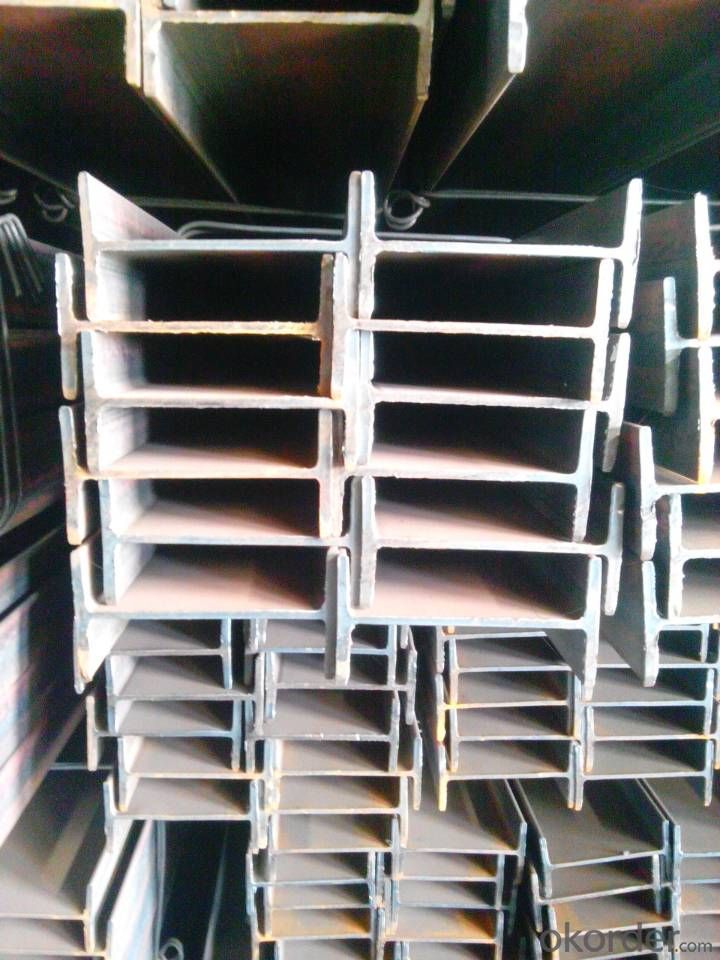
- Q: How do steel H-beams contribute to water conservation in buildings?
- Water conservation in buildings is greatly aided by the use of steel H-beams, as they enable the incorporation of sustainable design features like rainwater harvesting systems and efficient plumbing systems. To begin with, the construction of roofs often involves the utilization of steel H-beams, which are ideal for the installation of rainwater harvesting systems. These systems gather and store rainwater that can be utilized for various non-potable purposes, including toilet flushing, irrigation, and cooling. By utilizing rainwater instead of potable water for these tasks, steel H-beams indirectly aid in water conservation by reducing the demand for fresh water. Moreover, steel H-beams are crucial for the construction of water-efficient plumbing systems. These systems can integrate elements such as low-flow fixtures, dual-flush toilets, and sensor-activated faucets. These water-saving fixtures help minimize water consumption by reducing the amount of water used per flush or per use. Steel H-beams provide the necessary structural support to incorporate these sustainable plumbing features into building designs. Furthermore, steel H-beams possess exceptional durability and longevity, thus reducing the need for frequent repairs or replacements. This durability minimizes water wastage caused by leaks or damages to the building structure. By ensuring the stability and integrity of the building, steel H-beams actively contribute to water conservation by preventing water damage and subsequent water loss. To summarize, steel H-beams greatly aid in water conservation within buildings by enabling the installation of rainwater harvesting systems, supporting water-efficient plumbing systems, and providing structural durability to prevent water wastage. By incorporating these sustainable design features, steel H-beams assist in reducing the demand for fresh water and promoting responsible water usage in buildings.
- Q: Are Steel H-Beams resistant to termite or insect damage?
- Yes, steel H-beams are resistant to termite or insect damage. Unlike wooden beams, steel beams do not provide a food source for termites or other insects, making them highly resistant to infestation. Steel beams are made from a combination of iron and carbon, which do not attract or support termite colonies. This resistance to termite or insect damage is one of the many advantages of using steel H-beams in construction projects, as it ensures the structural integrity and longevity of the beams.
- Q: Can steel H-beams be used for overhead crane support?
- Yes, steel H-beams can be used for overhead crane support. They are commonly used in construction and industrial applications as they provide excellent load-bearing capacity and structural stability required for supporting the weight of overhead cranes.
- Q: How do steel H-beams contribute to the overall safety of a structure?
- A structure's overall safety is greatly enhanced by the presence of steel H-beams. There are several notable ways in which these beams contribute to safety. To begin with, the unique shape and design of H-beams provide exceptional structural strength and load-bearing capabilities. The horizontal flanges and vertical web of the beams create a strong and rigid framework that can endure heavy loads, such as the weight of the building or external forces like wind or earthquakes. This ensures the building's structural integrity and reduces the risk of collapse. Furthermore, the manufacturing of steel H-beams utilizes top-quality steel, which offers outstanding strength and durability. Steel is renowned for its ability to resist deformation and maintain its shape even in extreme conditions. This property allows H-beams to withstand various stresses and strains that may occur within a structure, such as bending, twisting, or shearing forces. By preventing significant deformations, steel H-beams help maintain the stability and safety of the entire structure. In addition, steel is a non-combustible material, making H-beams highly resistant to fire. If a fire were to occur, the steel H-beams would not contribute to the spread or intensity of the flames. This valuable fire resistance property enhances the overall safety of the structure, providing more time for evacuation and firefighting efforts. Moreover, steel H-beams are commonly used for constructing the primary load-bearing elements, such as columns, beams, and frames, in a building's structural system. By utilizing H-beams, the weight distribution is evenly spread throughout the structure, reducing the likelihood of localized stress concentrations. This even distribution of loads minimizes the risk of structural failure and enhances the overall safety of the building. Lastly, steel H-beams offer great versatility and can be customized to meet specific design requirements. This flexibility allows engineers to optimize the structural design for safety and efficiency. They can ensure that the H-beams are appropriately sized, spaced, and connected to withstand the anticipated loads and potential hazards. In conclusion, the incorporation of steel H-beams in construction significantly enhances the overall safety of a structure. Their exceptional strength, durability, fire resistance, even load distribution, and customization options all play a crucial role in improving the structural integrity and safeguarding the occupants from potential risks and hazards.
- Q: How are steel H-beams classified based on weight capacity?
- Steel H-beams are classified based on weight capacity into various load-bearing categories such as light, medium, and heavy-duty beams.
- Q: Can steel H-beams be used for supporting outdoor signage or billboards?
- Yes, steel H-beams can be used for supporting outdoor signage or billboards. Steel H-beams are known for their strength and durability, making them suitable for handling the weight and wind loads associated with outdoor signage. Additionally, their rigid structure provides stability and ensures the longevity of the signage or billboard installation.
- Q: Can steel H-beams be used for stadium structures?
- Indeed, stadium structures can be built using steel H-beams. The construction industry frequently employs steel H-beams owing to their remarkable strength and durability. These beams exhibit exceptional load-bearing capacities, rendering them well-suited for sustaining massive structures such as stadiums. Furthermore, steel H-beams lend themselves to effortless fabrication and assembly, thereby enabling the construction of stadiums with great efficiency and cost-effectiveness. Their adaptability and capacity to endure substantial loads establish them as an optimal selection for stadium construction.
- Q: How can the steel posts of different types of H steel be butted?
- The welded joint, flange should be used in single V groove plate with full penetration weld, the web should use the K shaped groove double partial penetration weld, the opposite is not clear; the design requirements of Web full penetration, such as the web thickness is less than 20mm, should adopt single V groove welding (plus plate figure 4.6.2-1 E), such as the web thickness is greater than 20mm, should adopt the K groove, double negative root cleaning after welding
- Q: How do steel H-beams perform in extreme temperature variations?
- Steel H-beams perform well in extreme temperature variations due to their high thermal stability and low thermal expansion coefficient, which allows them to maintain their structural integrity and strength even in extreme heat or cold conditions.
- Q: How do steel H-beams compare to concrete beams in terms of cost and durability?
- There are distinct differences in cost and durability between steel H-beams and concrete beams. In terms of cost, steel H-beams are generally more affordable. This is because steel is readily available and the manufacturing process for H-beams is efficient, resulting in lower production costs. Additionally, steel H-beams can be fabricated off-site and delivered to the construction site, reducing labor costs and construction time. On the other hand, concrete beams require on-site casting, which can be time-consuming, and the materials involved in concrete beam construction can be more expensive. When it comes to durability, both steel H-beams and concrete beams have their strengths. Steel has high tensile strength, allowing it to withstand heavy loads and resist bending or warping. This makes steel H-beams a popular choice for structures that require long spans or have large load-bearing requirements. Concrete, on the other hand, has excellent compressive strength, making it suitable for withstanding vertical loads. Concrete beams also have the advantage of being fire-resistant, which is important in certain applications. However, it is important to note that steel is susceptible to corrosion if not properly protected. Without appropriate coatings or maintenance, steel H-beams can rust and deteriorate over time, reducing their durability. In contrast, concrete beams have a longer lifespan and are less prone to corrosion. Once properly cured, concrete beams can withstand environmental factors and have a longer service life compared to steel. In conclusion, steel H-beams offer cost advantages due to their affordability and ease of fabrication, while concrete beams are generally more durable with a longer lifespan. The choice between the two materials ultimately depends on the specific requirements of the project, including load capacities, span lengths, and environmental factors.
Send your message to us
European Standard IPE200 Steel High Quality
- Loading Port:
- China main port
- Payment Terms:
- TT OR LC
- Min Order Qty:
- 50 m.t.
- Supply Capability:
- 10000 m.t./month
OKorder Service Pledge
OKorder Financial Service
Similar products
Hot products
Hot Searches
Related keywords
